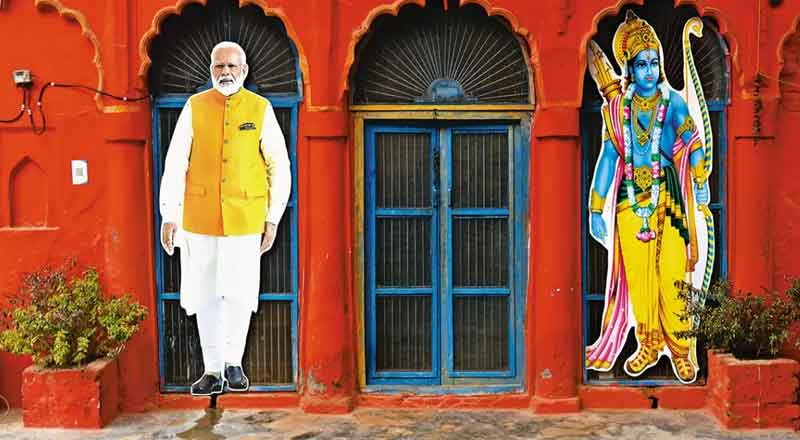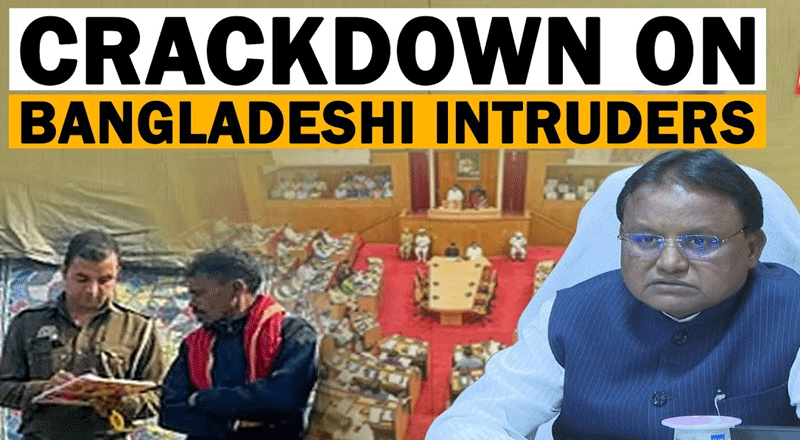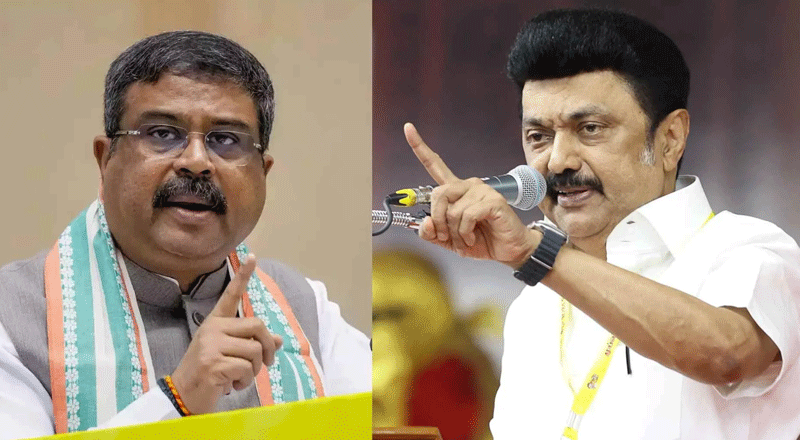Pran Pratishtha ceremony of Ram’s idol in Ayodhya has transformed the political landscape. Following Hindu tradition is the new buzz in governance but its foundation was laid in 1986
Whether good, bad or ugly, the fact is that ‘Ramaisation’ of Indian politics seems to be at its peak. Pran Pratishtha ceremony of Lord Ram’s idol in Ayodhya has completely transformed BJP into a Ram bhakta party. Once considered to be a rational leader, Magsaysay Award winner Arvind Kejriwal, the Chief Minister of Delhi, has officially announced plans to organise the recitation of Sunderkand (A chapter in the Ramayana) at various places in the capital city. Veteran Socialist leader late Biju Patnaik’s son and Chief Minister of Odisha Naveen Patnaik is considered to be a secular leader as far as his political ideology is concerned. He has announced that his government will construct an ambitious Jagannath Puri temple corridor on January 17 and to begin auspiciously, he suggested that citizens of his state light earthen lamps in their homes and blow conch shells. Constitutionally, governments in India are not supposed to follow a particular religious tradition because we are a secular state. But that doesn’t seem to apply anymore.
Following Hindu tradition is the new buzz in governance but its foundation was laid way back in 1986. On February 1,1986, the Faizabad district court passed an order to unlock the door of a little temple in which a small idol of Lord Ram had existed for a long time. Since the idol was situated exactly beneath the dome of the Babri Masjid, no puja was allowed there to maintain communal harmony. Hindus were agitating in a very insignificant way. Litigations were on but at the level of the lower courts. The door was locked as per the orders of the district administration. No one was allowed inside. The Vishva Hindu Parishad (VHP), a sister organisation of the Rashtriya Swayam sevak Sangh (RSS) was trying to make a bigger issue out of it. They were organising public meetings and rath yatras and calling it injustice against Hindus. A lawyer associated with the VHP had filed a petition in the local court seeking to unlock the door and allow devotees in for worship.
BJP was just a six-year-old party at that time. It won only two seats in the Lok Sabha in the 1984 general elections. Atal Behari Vajpayee was at the helm of the affairs in the party. Under his leadership, the party had adopted Gandhian Socialism as its main political ideology. After a huge electoral set back, there was a simmering in the party. The RSS was trying to impose its Hindutva philosophy on the party. Advani grabbed the opportunity and after he became the party president in 1986, he immediately dumped the bogey of Gandhian Socialism and started toying with the idea of Hindutva.
Rajiv Gandhi was prime minister of India at the time after securing a landslide victory in the Lok Sabha. I was working in Panchjanya, considered to be the mouthpiece of the RSS. An RSS pracharak, Bhanu Pratap Shukla, was my editor. We published a special story on the Ram temple issue every week. In our editorial meetings, Bhanu-ji used to say that ‘‘Ab Ram-ji hi beda par karenge. We must give maximum coverage to the Ram temple movement.” In the evenings, we use to assemble in the RSS office at Jhandewalan. Rajju bhaiya was number two in the RSS hierarchy then. He was a highly educated person, a gold medallist in Chemistry. He would talk to us about the social and political importance of the Ram temple movement. He was sure that with the success of the movement, real Ram rajya will be established in India. I was in my twenties at that time. I never understood how it is going to work in the future. He never explained it to me either.
The VHP was the flagbearer of the movement. The RSS was backing it fully but not from the front. Organisations like the Bajrang Dal were asked to join the movement to create aggression. Ashok Singhal, Vinay Katiyar, Uma Bharti and the likes were the faces of the movement. The BJP under the leadership of L K Advani had started supporting the movement. But mixing religion with politics was not supposed to be an acceptable idea in those days. So the BJP never came on board with the VHP openly as far as the temple movement was concerned.
The era of Vishwanath Pratap Singh (V P Singh) was starting. He had begun to revolt against Rajiv Gandhi. India was witnessing a new prime minister in the making. The Bofors scandal was making headlines in the newspapers every day. There is a perception that to counter the Shahbano case fiasco, Rajiv Gandhi had asked Doordarshan to start a TV serial called Ramayan. It was the story of Lord Ram. He truly believed that the younger generation must learn about the ideals of Lord Ram. It became a hugely popular programme, but instead of helping Rajiv Gandhi or the Congress, it aided those who were running the Ram temple movement. Interestingly, the loud slogan of “Jai Shree Ram” of the temple movement was taken from this TV serial.
Rajiv Gandhi with all his brute majority was losing his grip over the narrative. V P Singh was travelling all across the country with several lies to defame him. He was getting a lot of traction. The BJP preferred V P Singh and Bofors over Ram. They didn’t mention the Ram temple movement in their 1989 election manifesto. Their tally in the Lok Sabha increased manifold. From 2 to 85. Advani was smart enough to sense the mood of the Indian electorate.
Then came 1991. VP Singh’s short-lived government was toppled. To provide reservation to OBC communities in education and jobs, he implemented the recommendations of the Mandal Commission. A huge protest by the student fraternity was taking place all across the country, particularly in north India.
Advani started his rath yatra from Somnath to Ayodhya. Naturally, the Ram temple movement came on the agenda of the BJP. In the 1991 general elections, the BJP added the Ram temple issue to its election manifesto for the first time. But it got a mention of only six sentences, under the head of ‘Sri Ram Mandir at Janmasthan’. The party said, ‘‘The party is committed to build Sri Ram Mandir at Janmasthan by relocating superimposed Babri structure.’’
By the time the 1996 general elections came around, the Babri Masjid was demolished. Hindutva politics had taken centrestage. The BJP elaborated the Ram temple issue extensively in its new manifesto giving a full chapter of more than 20 sentences to it. The party pledged openly to facilitate the construction of a ‘‘magnificent’’ Ram temple in Ayodhya. Now the BJP had fully jumped into the Ram Janmabhoomi Andolan. It gave tickets to firebrand Hindutva leaders Uma Bharti and Vinay Katiyar to reach the Lok Sabha. The TV artists who played Sita and Ravan in the serial were fielded in the Lok Sabha election. All of them won.
28 years have passed since then. A once reluctant BJP has converted the construction of the Ram temple into its main poll plank for the 2024 general elections. It is not at all hesitant now. Prime Minister Modi himself is hosting the ceremony on January 22. Top film stars and cricket players seem excited to attend the Pran Pratishtha ceremony. Is it Ram rajya? Not really. But the country seems swayed by Lord Ram for sure.
What happened in 1986 before our eyes has now completed the full circle. What I could not anticipate 38 years ago has become a reality now.
(Views expressed are personal)
Sanjay Nirupam is a Congress leader and former Rajya Sabha member





